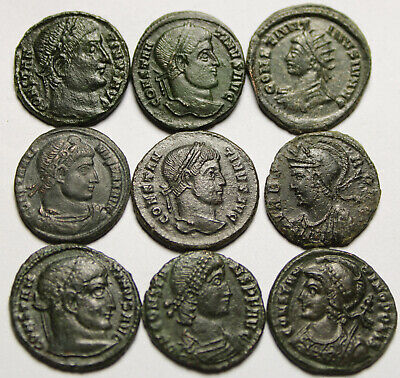The allure of ancient Roman coins extends beyond their mere monetary value. These coins are cherished by numismatists and history enthusiasts alike for their rich historical significance and craftsmanship. This article delves into the world of ancient Roman coins, examining their origins, types, and factors that influence their market value.

Introduction to Ancient Roman Coins
Minted over several centuries, Roman coins offer insights into the political, economic, and cultural aspects of the Roman Empire. Collectors and historians appreciate these coins for their aesthetic appeal and the stories they tell about the past. From the iconic portrait of Julius Caesar to the architectural depictions on commemorative issues, Roman coins serve as tangible links to history.
Types of Ancient Roman Coins
Several types of coins minted during the Roman era stand out due to their unique characteristics and historical context. Here is a list of some prominent Roman coins:
- Denarius: A silver coin that became the standard Roman currency for centuries.
- Aureus: A gold coin valued at 25 denarii, often used for large transactions and savings.
- Sestertius: A large brass or bronze coin used frequently in daily commerce.
- Dupondius: A bronze coin that was worth half a sestertius.
- As: A small bronze coin used for everyday purchases.
Factors Affecting the Value of Roman Coins
The value of ancient Roman coins in the modern market can vary significantly based on several factors. Understanding these can help collectors make informed decisions when buying or selling these historical artifacts.
Rarity
Coins minted in limited quantities or for a short period tend to be more valuable due to scarcity. Certain emperors, such as Otho and Pertinax, had short reigns, resulting in fewer coins being minted, thus increasing their rarity and desirability.
Condition
The condition or grade of a coin significantly impacts its value. Coins well-preserved with minimal wear are more sought after by collectors. Grading systems classify coins from poor to mint state, with higher grades commanding higher prices.
Historical Significance
Coins associated with significant historical events or figures often have more excellent value. For instance, coins depicting Julius Caesar issued shortly before his assassination are highly prized due to their historical relevance.
Artistic Merit
The design and artistry of a coin can also influence its value. Coins with intricate designs or those that feature unique or rare portraits are often more valuable to collectors who appreciate the aesthetic aspects of numismatics.
Market Demand
The demand for specific coins can fluctuate based on trends within the numismatic community. Coins currently popular among collectors or featured in exhibitions may see an increase in value.
Roman Coins Examples Values
| Coin Type | Estimated Value | Notable Features |
|---|---|---|
| Julius Caesar Denarius | $2,000 – $5,000 | IChallenging to find, depicts Julius Caesar’s portrait |
| Aureus of Augustus | $10,000 – $30,000 | Gold coin, represents the early Roman Empire |
| Sestertius of Nero | $1,500 – $3,500 | Large brass coin with intricate designs |
Conclusion
Ancient Roman coins are a fascinating intersection of history and art, offering a glimpse into the past while holding intrinsic and monetary value in the present. For numismatists, these coins represent more than just collectibles; they are artifacts that encapsulate the legacy of an empire that shaped the course of history. Understanding the factors that influence their value can enrich one’s appreciation and inform wise investment decisions in numismatics.